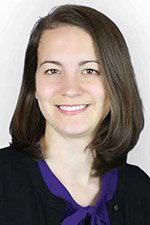In science, some big risks are worth the rewards
- More than 2 years ago
 At the end of my previous Editor’s Note (SN: 11/11/17, p. 2), I wrote about one of the great discoveries of the 1920s. By studying distant nebulae, Edwin Hubble found that our galaxy is not alone in the universe. Instead, it is one of an amazing multitude of “island universes.” When I wrote those words, I had no idea that just a couple of weeks later, I would get to visit the impressive instrument that made Hubble’s discovery possible.
At the end of my previous Editor’s Note (SN: 11/11/17, p. 2), I wrote about one of the great discoveries of the 1920s. By studying distant nebulae, Edwin Hubble found that our galaxy is not alone in the universe. Instead, it is one of an amazing multitude of “island universes.” When I wrote those words, I had no idea that just a couple of weeks later, I would get to visit the impressive instrument that made Hubble’s discovery possible.
On the evening of November 1, I joined many dozens of other astronomy enthusiasts to celebrate the 100th anniversary of the 100-inch Hooker telescope at Mount Wilson Observatory, about an hour drive from Pasadena, Calif. The telescope, named for the Los Angeles businessman who provided initial funding, was the masterwork of solar astronomer George Ellery Hale. At the time, and for more than three decades, it was the largest telescope in the world.
Undertaking such a grand endeavor was risky. No one knew whether a glass disk 100 inches in diameter could be cast with the optical quality required for a telescope mirror. (The mirror ended up with bubbles and swirls. Hale, not knowing whether they’d cause problems, crossed his fingers and proceeded with years of grinding and shaping.) Even as the disk was being prepped, Hale hadn’t secured the final funding. Plus, there was the trouble of hauling the mirror, which weighed more than 4 tons, up the mountain, along with the rest of the materials for the telescope and its dome. My own drive proved perilous enough, with some 4,500 feet of elevation gain via nail-biting turns and guardrails too low to offer any comfort.
The poet Alfred Noyes, who was at Mount Wilson on November 1, 1917, when the completed telescope first turned to the sky, later wrote of the scientists: “Where was the gambler that would stake so much,— / Time, patience, treasure, on a single throw? / … All their youth / Was fuel to the flame of this one work.”
In this case, the risk was worth the reward. Not only did Hubble use the telescope to reveal the vast cosmos beyond our galaxy and redefine our universe, but observations with the same telescope also showed that our universe is expanding. Speaking at the anniversary event, John Mulchaey, director of the Carnegie Observatories, called the 100-inch “the most important telescope built in the modern era.” Its discoveries launched much of modern astronomy. Now we can ask questions earlier astronomers never thought to ask: Why is the universe expanding? Why is that expansion accelerating? (See “What detecting gravitational waves means for the expansion of the universe” and “Simulating the universe using Einstein’s theory of gravity may solve cosmic puzzles” for more on that topic.) We can probe deeper into the universe’s beginning and end.
Success wasn’t guaranteed. Big efforts in science don’t always pay off. Hypotheses can lead in the wrong direction, and experiments can come up empty. Often researchers are left yearning for more data. We don’t, for example, yet know how important a newly discovered void in the Great Pyramid of Giza will be or exactly how gut fungi affect human health. Though genetic findings are rewriting the story of nomadic herders, their role in the Bronze Age is still somewhat murky. But Hale had the right attitude. He wanted larger telescopes not because of what he knew he would find, but for what he didn’t know was out there.







